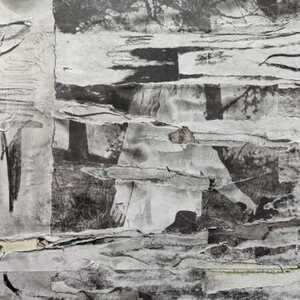BOOK REVIEW: The Map That Changed The World
by James MacLaren
The Map That Changed The World: William
Smith and the Birth of Modern Geology
Simon Winchester, 2001, Harper Collins Publishers</b>
What a wonderfully obscure and informative piece of
work! Who among us has ever given the least thought to
the business by which our modern appreciation of the
lithic organization of our home planet came into
being? Or the thunderous effect that the understanding
of the Earth’s full age has had upon the purveyors of
revealed wisdom, cant and dogma, and other flummery
espoused by fundamentalist nitwits the like of James
Ussher and all who have preceded and followed him?
Precious few of us, I’m sure.
That this tale is woven from the life history of but a
single man, living in England during the late
eighteenth century and early nineteenth, is remarkable
in the extreme. And, even more remarkably, the tale
twists and turns like some kind of melodramatic
morality play. There are good guys and bad guys
aplenty.
Had I not read this book, I would have been sorely
taxed to believe the outrageous details of William
Smith’s life and work.
Who the hell is William Smith ANYWAY?
Simon Winchester does a perfectly marvelous job of
telling us who, exactly, this William Smith was.
This book is thoroughly British from top to bottom,
and if you’re not familiar with haunts the like of
Kilmersdon, Chew Stoke, Dunkerton, Tucking Mill, and a
host of other delightfully weird place names, then
you’d best crack out the maps and teach yourself a bit
of rural English geography. Nothing but good can come
of what you learn.
Sprinkled among the weird place names are a host of
characters with Dickensian monikers. A Mrs. Kitten
here. A Mr. Barne Barne there. An Adelard of Bath off
in the far distance. All real people, and all more or
less directly involved with the fortunes of William
Smith, and so the fortunes of the birthing of modern
geology and all that flows inevitably therefrom.
Smith was born low in a time of high snobbery. This
was a crippling handicap in ways that you and I,
children of a far more egalitarian epoch, can only
dimly appreciate. For William Smith, the insults,
injury, and wrongs were all too easy to appreciate,
falling out of the sky and on to his exposed pelt as
they did. Despite it all, through dint of heroic
exertions, he managed to lay open, for all to see, the
mysteries of the underworld above which we all go
about our daily business. All of us excepting folks
like coal miners, who play a seminal role in this
tale.
Smith stumbled upon a discovery that, for its day, was
as explosive as plutonium and he started out on his
road by going underground where the coal seams were.
Along the way he surveyed, dug canals, drained land,
traveled for thousands of miles across an unmotorized
landscape, dealt with lords, lairds, and the
occasional prime minister along with his far less high
born fellowmen, and generally operated at a prodigious
physical and mental pace. Despite his brushes with the
high and mighty (or perhaps because of them), he also
saw the inside of debtor’s prison, was foreclosed
upon, had all his worldly possessions confiscated and
sold off to pay his debts, saw his own work brazenly
stolen and used by others for their own gain, and
after a long and illustrious career inventing the
business of stratigraphy, found himself ignored,
completely unappreciated, and otherwise cast off from
society like a crumpled bit of rubbish.
And yet, in spite of it all, the story has a fairy
tale ending. In his old age, Smith was finally
rediscovered by those for whom he invented their
craft, and at long last showered with the honor which
had been rightly his the whole time. His final years
were happy ones, rich with the attentions of a stellar
assortment of his countrymen and comfortably financed
by a special pension, granted by King William IV.
I haven’t told the slightest of the tale. You really
should read this book. You’ll learn a thing or two
about subjects you didn’t even know you had an
interest in.
William Smith’s Great Map shelters behind pale blue
curtains in a certain building in London. If you’re in
the neighborhood, give it a look.












